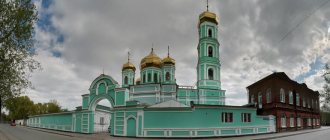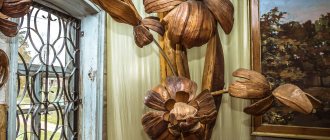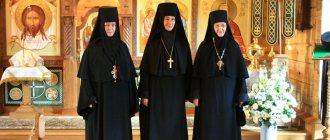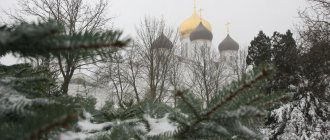Mir
Russia Arkhangelsk region Antoniev-Siysky village Trinity Monastery Antoniev Siysky monastery Map is loading…
{"format":"leaflet","minzoom":false,"maxzoom":false,"limit":50,"offset":0,"link":"all","sort":[""], "order":[],"headers":"show","mainlabel":"","intro":"","outro":"","searchlabel":"\u2026 \u0441\u043b\u0435\ u0434\u0443\u044e\u0449\u0438\u0435 \u0440\u0435\u0437\u0443\u043b\u044c\u0442\u0430\u0442\u044b","default":"","import-annotation":false,"width ":"auto","height":"350px","centre":{"text":"","title":"""link":"""lat":63.5555049999999965848473948426544666290283203125,"lon": 41.5537470000000013214958016760647296905517578125,"icon":""},"title":"","label":"","icon":"","lines":[],"polygons":[],"circles":[ ],"rectangles":[],"copycoords":false,"static":false,"zoom":8,"defzoom":14,"layers":["OpenStreetMap"],"image layers":[] ,"overlays":[],"resizable":false,"fullscreen":true,"scrollwheelzoom":true,"cluster":false,"clustermaxzoom":9,"clusterzoomonclick":true,"clustermaxradius":80, "clusterspiderfy":true,"geojson":"","clicktarget":"","showtitle":true,"hidenamespace":false,"template":"","userparam":"","activeicon": "","pagelabel":false,"ajaxcoordproperty":"","ajaxquery":"","locations":[{"text":"\u003Cb\u003E\u003Ca href=\"/palomnik/%D0% A2%D1%80%D0%BE%D0%B8%D1%86%D0%BA%D0%B8%D0%B9_%D0%90%D0%BD%D1%82%D0%BE%D0%BD% D0%B8%D0%B5%D0%B2_%D0%A1%D0%B8%D0%B9%D1%81%D0%BA%D0%B8%D0%B9_%D0%BC%D1%83%D0% B6%D1%81%D0%BA%D0%BE%D0%B9_%D0%BC%D0%BE%D0%BD%D0%B0%D1%81%D1%82%D1%8B%D1%80% D1%. 439\u0441\ u043a\u0438\u0439 \u043c\u0443\u0436\u0441\u043a\u043e\u0439 \u043c\u043e\u043d\u0430\u0441\u0442\u044b\u0440\u044c\"\u003E\ u0422\u0440\u043e\u0438\ u0446\u043a\u0438\u0439 \u0410\u043d\u0442\u043e\u043d\u0438\u0435\u0432 \u0421\u0438\u0439\u0441\u043a\u0438\u0439 \u043c\u 0443\u0436\u0441\u043a\u043e\ u0439 \u043c\u043e\u043d\u0430\u0441\u0442\u044b\u0440\u044c\u003C/a\u003E\u003C/b\u003E\u003Chr /\u003E\u003Ca href=\»/palomnik/%D0%A1 % D0%B2%D0%BE%D0%B9%D1%81%D1%82%D0%B2%D0%BE:%D0%90%D0%BD%D0%BD%D0%BE%D1%82%D0 %B0%D1%86%D0%B8%D1%8F\" title=\"\u0421\u0432\u043e\u0439\u0441\u0442\u0432\u043e:\u0410\u043d\u043d\u043e\u0442\u0430\ u0446\u0438\u044f\»\u003E\u0410\u043d\u043d\u043e\u0442\u0430\u0446\u0438\u044f\u003C/a\u003E: \u043f\u0440\u0430\u0432\u043 e\u0441\u043b\u0430 \u0432\u043d\u044b\u0439 \u043c\u043e\u043d\u0430\u0441\u0442\u044b\u0440\u044c \u0432 \u0410\u0440\u0445\u0430\u043d\u0433 \u0435\u043b\u044c\u0441\u043a \u043e\u0439 \u043e\u0431\u043b\u0430\u0441\u0442\u0438. 1520 \u043f\u0440\u0435\u043f\u043e\ u0434\u043e\u0431\u043d\u044b\u043c \u0410\u043d\u0442\u043e\u043d\u0438\u0435\u043c \u0421\u0438\u0439\u0441\u043a\u0438\u0 43c. \u0412 \u043d\u0430\u0441\u0442\u043e\u044f\u0449\u0435\u0435 \u0432\u0440\u0435\u043c\u044f \u043c\u043e\u043d\u0430\u0441 \u0442\u044b\u0440\u044c \u0434 \u0435\u0439\u0441\u0442\u0432\u0443\u044e\u0449\u0438\u0439. \u0415\u0436\u0435\u0434\u043d\u0435\u0432\u043d\u043e\u0441\u043e\u0432\u0435\u0440\u0448\u0430\u044e\u0442\u0441\u044f\ u0431\u043e\u0433\u043e\u0441 \u043b\u0443\u0436\u0435\u043d\u0438\u044f. \u041f\u0440\u0438 \u043c\u043e\u043d\u0430\u0441\u0442\u044b\u0440\u0435 \u0434\u0435\u0439\u0441\u0442\u0432\u0443\u0435\ u0442\u0442\u0440\u0430\u043f \u0435\u0437\u043d\u0430\u044f \u0438 \u0433\u043e\u0441\u0442\u0438\u043d\u0438\u0446\u0430.","title":"\u0422\u0440\u043e\u0438 \u0446\u043a \u0438\u0439 \u0410\u043d\u0442\u043e\u043d\u0438\u0435\u0432 \u0421\u0438\u0439\u0441\u043a\u0438\u0439 \u043c\u0443\u0436 \u0441\u043a\u043e\u0439 \u043c \u043e\u043d\u0430\u0441\u0442\u044b\u0440\u044c","link":"","lat":63.5555049999999965848473948426544666290283203125,"lon":41.5537470 000000013214958016760647296905517578125,"icon":""}],"imageLayers": []}
63.555505; 41.553747
Russia, Arkhangelsk region, Kholmogorsky district, Yemetskoye municipality, village of Antoniyevo-Siysky Monastery
Antoniyevo-Siysky Monastery village, Arkhangelsk region
Russia
Phones:
+7 911 593 33 60;.
Email:
Trinity Anthony Siysky Monastery
- Orthodox monastery in the Arkhangelsk region. Founded in 1520 by St. Anthony of Siya. Currently the monastery is active. Divine services are held daily. There is a refectory and a hotel at the monastery.
Current state[edit]
Currently, there are 20 brethren in the monastery, and about 30 workers permanently reside. Liturgical, spiritual, educational, social, charitable, and missionary activities are being revived. Since the beginning of the revival, the Liturgy has been celebrated daily in the monastery. According to ancient tradition, a monastery library (over 40 thousand items) and an icon-painting workshop have been re-created in the Anthony-Siysky Monastery. The monastery publishes monthly the missionary newspaper “Spiritual Sower” and the church-historical annual almanac “Siysky Chronograph”. The farm has a livestock farm, stables, greenhouses, bakery, mechanical and carpentry workshops. Temples are being restored. The Anthony-Siysky Monastery provides care for several parishes of the diocese that do not have priests.
History of creation
The monastery was founded in 1520 by the venerable Anthony of the Russian Church of Siysky, who settled in this then deserted place with the permission of the Grand Duke of Vladimir and Moscow Vasily III. Bearing the name Andrew in the world, the founder became the first abbot of the Siysk monastery and then in 1579 was canonized.
Several decades after the construction of the first chapel, in 1587, the first charter came for the construction of a stone cathedral in this part of the peninsula, the construction of which stretched over four whole reigns - the temple was completely ready only 20 years later. During the same time period (1601-1605), the boyar Fyodor Nikitich Romanov, whose son later became the first tsar of the Romanov dynasty, was imprisoned on the territory of the monastery, so the place attracts not only believers, but also historians from different parts of Russia.
It is interesting that until 1613 the monastery of the Anthony-Siysky Monastery included the Ivanovo Emetsky Monastery, which was located in the Kholmogory district, 180 km from Arkhangelsk, until its complete destruction by Prince Pronsky, who feared incursions by Polish troops.
© Valery Isaev
In pre-Petrine times, the Siysky Monastery was one of the largest spiritual centers of the Russian North. His book collection included such unique manuscripts as the Siya Gospel of the 16th century, as well as illustrated calendars. In the post-revolutionary period, however, the manuscripts were confiscated from the monks and transported to the Arkhangelsk Regional Archives, and in 1958 and 1966. were transferred to the Russian State Archive of Ancient Acts in Moscow.
It is also worth noting that in 1730 the first major Russian naturalist, Mikhailo Lomonosov, stayed in the monastery, and was given a sheepskin coat to brighten up his long journey to Moscow.
In 1923, the Anthony-Siysky Monastery was closed by a decree of the local government. The territory was used for the needs of the collective farm, as well as a recreation area for forest industry workers, a home for disabled children and a nursing home. In the 1970s The Avtomobilist pioneer camp was located here.
In 1992, the monastery was officially transferred to the Russian Orthodox Church, and soon the restoration of the holy monastery began.
© Valery Isaev
Metochion of the Siysk Monastery
The Anthony-Siysky Monastery includes several architectural monuments. The main one is the four-pillar, five-domed Trinity Cathedral, which was founded in 1589 and completed only in 1606. The temple combines elements of Novgorod and Moscow architecture: vaults in low arches, arcature links, a wide entablature located under the zakomari. It is easy to determine with the naked eye that the middle chapter significantly dominates the rest. About a hundred years after its construction, the cathedral was covered with four slopes and the shape of its central chapter was changed.
The second object is the tent-roofed Annunciation Church, which was founded in 1638 with a refectory and cellar chambers. Construction of the church took about five years. An interesting fact is that the new building was erected on the site of a previously existing wooden temple and largely replicates its architecture. This is evidenced by the presence of elements of wooden temple architecture. For example, a high tent on a small octagonal structure, a two-part altar, as well as two small domes above the altars, which were subsequently lost.
Later, in the period from 1661 to 1687, the Holy Gates, which are the main entrance to the monastery, and the Sergius Church with two-story cells were also built. All major construction work was completed only by 1699.
© dualia1
Church of the Epiphany on Gutuevsky Island 1899
The miraculous rescue of Emperor Alexander III and his family on October 17 1888
years, a train crash in Borki near Kharkov prompted the construction of many churches in the country dedicated to this event.
Church of the Epiphany on Gutuevsky Island 1899
Filming April 16, 2011 We decided to celebrate this miracle and the customs officers, stock exchange workers and port officials who inhabited Gutuevsky Island and the mouth of the Neva, where the trading port was moved after the opening of the Sea Canal.
Initially, it was planned to build a stone chapel using the donations collected. It was for the first time that he proposed to build on the island not a chapel, but a temple 1891
the rector of the nearby Alexander Nevsky Church of the St. Petersburg Marine Hospital, Father Vasily Evdokimovich Albitsky.
Church of the Epiphany on Gutuevsky Island 1899 Filming April 16, 2011
Civil engineer S.I. Andreev had already drawn up its design when the owner of paper spinning and calico printing factories, Ivan Agapovich Voronin, known for his charity, donated a large sum for the stone building, stipulating the placement of a family tomb in it. The Ministry of Finance also supported the construction of the new temple with significant sums.
The land necessary for the construction of the church with space for a garden around it was ceded free of charge by the city in the amount of 1000 square fathoms at the corner of Dinaburgskaya (now Dvinskaya) street and the embankment of the Ekateringofka River, near the Gutuevsky Bridge. Thanks to the well-chosen location on the highest part of the island, the temple was visible from the Gulf of Finland, from Vasilyevsky Island, and from the Obvodny Canal from Moskovsky Prospekt. The almost all-round view of the church at a great distance has been reduced even today with the advent of numerous high-rise buildings.
Church of the Epiphany on Gutuevsky Island 1899 Filming April 16, 2011
A new design for a temple for 1,400 people with a large dome was created by civil engineer (later director of the Institute of Civil Engineers) Vasily Antonovich Kosyakov and engineer B. K. Pravdzik.
The foundation stone of the temple took place with the blessing of Metropolitan Isidore (Nikolsky) of Novgorod and St. Petersburg.
January 31 1899
city, V.A. Kosyakov arranged an inspection of the finished temple for members of the construction commission, engineers and students.
Soon in May 1899
The northern aisle of the church was consecrated in the name of St. Nicholas the Wonderworker (May 9/22 and December 6/19), and on July 18 the southern aisle was consecrated in honor of the Monk John the Spostnik (commemorated on July 21/August 3).
A huge dome, which had a relief gilded belt on a zinc roof (new at that time) and crowned with a large cross, stood beautifully among the young greenery of the surrounding garden. The zinc domes and tents were well done by master G.N. Mittenberger.
Church of the Epiphany on Gutuevsky Island 1899 Filming April 16, 2011
The temple building, as they wrote then, was built in the “Russian style”, or more precisely, its brick variety. Lined with red patterned brick, with forged iron bars on the windows, the temple immediately attracted attention with the elegance of its decoration and the abundance of external decorations. The facades of the church are not plastered and, thus, the red brick determined the endless variety of “patterns”, achieved both by giving different shapes to the brick by hewing, and by using patterned bricks.
In addition, various masonry techniques, recesses and extensions of bricks on the walls made it possible to create flies, runners, and curbs in the most numerous variations of alternations. The facades were greatly enlivened by the rich majolica tile inserts with polychrome designs inserted into the kokoshniks in the window casings and in the flies of the horizontal belts of the temple. All this was done at Kuznetsov’s factories.
Church of the Epiphany on Gutuevsky Island 1899 Filming May 30, 2010
The splendor of the facades was complemented by mosaic icons made in the workshop of V.A. Frolov. On the western facade of the temple there were icons of the Savior Not Made by Hands, the Mother of God and St. John the Baptist; in the corners of the base of the dome drum there are icons of St. Nicholas the Wonderworker, St. Sergius of Radonezh, St. John the Spostnik and St. Anna the prophetess. The last two icons were destroyed, but they can be identified from surviving photographs.
The church was built according to one of the traditional “cross” plans for Orthodoxy. This also determined the construction of masses growing in height towards the center. The building, stretched along a west-east line, had a high porch with a full-width granite staircase, limited by granite lockers. Then there is a vestibule with a bell tower above it, the core of the temple, side chapels and an altar. Behind the altar there is a chapel with an entrance from the east and from the altar, with a staircase in the south-eastern part of the building leading to the tomb.
Church of the Epiphany on Gutuevsky Island 1899 Filming April 16, 2011
On the western facade, above the main entrance to the temple, there was a low tented bell tower with 10 bells with a total weight of 755 pounds, the main bell weighed 525 pounds 31 pounds (a little over 8.4 tons). The bells, cast in Moscow at the Samgin plant, visited the World Exhibition in Chicago, where their “crimson” ringing was appreciated by visitors to the exhibition.
The walls and vaults of the church were covered with a continuous carpet of alfresco paintings. The subject painting of the temple walls was performed by academician A.S. Slavtsev, ornamental painting by artist K.N. Butakov, the icons in the icon cases and the drum were painted by the artist A.M. Postnikov. The lower tier consisted entirely of paintings on gospel subjects, starting with the Nativity of Christ. This painting seemed to replace the festive rite of the iconostasis, which had only one row.
To consecrate the building, a unique electrical equipment system was developed for 450 light bulbs, hidden from the parishioners behind the lintels of the altar arch. During the day, the temple amazed with the mass of light that poured from the huge windows. But the altar and dome images looked especially impressive during the evening service, illuminated by the soft light of the then rare electric consecration. The interior of the temple was also consecrated by three bronze chandeliers of highly artistic work, and additional sconces were placed on the ground floor and choirs.
The building had heater and steam-water central heating. It was a miracle of the technology of that time, designed by civil engineer B.K. Pravdzik and mounted by K.B. Siegel. The boiler room was located in a special building built next to the church, which has survived to this day, and the heating chambers were located in the basements of the church.
Much later in 1923 – 1932
years, according to the same drawings by V. A. Kosyakov, the St. Sophia Cathedral was built in the Chinese city of Harbin - an absolute copy of the Church of the Epiphany. Currently, the temple in Harbin is closed, but has been completely restored and is one of the main attractions of the city.
The Church of the Epiphany was closed on May 5 1935
by decree of the All-Russian Central Executive Committee and given over to a warehouse. For some time the temple continued to operate, but rotting potatoes were already being brought into the temple basements. The smell was appropriate. The very next day after the final closure of the temple, the Bolsheviks barbarously destroyed the unique faience iconostasis and violated the icons and other shrines of the temple.
12 small fragments of the iconostasis were discovered in the basement of a separate building only in 1997
G.
The bells have not survived either. The northern and southern aisles, ending with drums with tents, onion domes and forged crosses, as well as the bell tower tent, were destroyed.
Even before the closing of the Epiphany Church on April 14/27 1931
year, the rector of the church, Archpriest Vasily Medvedsky, was shot on charges of counter-revolutionary conspiracy. Arrested on Christmas Eve, Father Vasily, during his only interrogation, denied the accusations against him and refused to give the testimony required by the security officers. He suffered martyrdom on Antipascha, on the Monday of St. Thomas Week.
During the blockade of the city, when the church was used as a morgue, its building was hit by a German shell, which pierced the roof, and the resulting fire caused severe damage to the church. After the war, the temple was empty for a long time. The destruction of the church was continued by setting up a soap factory in it.
Subsequently, the temple was converted into a warehouse for the Frunzensky department store. Adapting the temple for this, the builders made three additional floors, attached a boiler room to the walls, and installed water heating, fire water supply, and sewerage throughout the resulting 4 floors. During these works, the forged gratings of the drum balcony, the choir balcony, molded cornices, and paintings were destroyed. Part of the metal frames was broken to create an emergency exit onto the roof of the boiler room. The metal window frames, brought to a state of disrepair, stood without glass, and the openings were covered with plywood panels.
The warehouse beams and floors, as well as the elevator for transporting department store goods, were finally freed only in 2003
year, when parishioners were able again, after many years, to see the painting of the central dome - the Almighty Savior.
The central powerful helmet-shaped head of the temple was completely destroyed in the 50s. When the building was transferred to the warehouse of the Frunzensky department store, the chapter was made anew, but of a different shape. The structure was wooden, hastily made with numerous structural violations. There was water in the basement for many years, as the drainage system was broken and, in addition, waste from the sewer constantly got there. When the basements were drained and cleared, only a few slabs were discovered from the stone floor.
The temple was in such a terrible state until 1991
year, when the community of the Church of the Epiphany was registered on January 4.
On April 19 , 1991
, the church was taken under state protection as a historical and cultural monument by order of the mayor of St. Petersburg and transferred to the diocesan administration “for prayer purposes.”
The external appearance of the temple has been almost completely recreated: domes have been erected, crosses have been erected, tiles and most of the mosaic icons have been restored, the metal window frames of the entire building and part of the forged grilles of the first floor windows have been recreated; The basement of the building was cleared and its waterproofing was restored.
The outer walls of the church have been cleared of soot. Ten bells were cast and raised to the bell tower (the largest weighs 1840 kg). IN 2008
On Christmas Eve, their consecration took place. The iconostasis and wall paintings are gradually being restored.
Where is it located in the Arkhangelsk region?
The monastery is located in the Arkhangelsk region, on a peninsula located in Bolshoy Mikhailovskoye Lake. The Siya River flows from the lake and flows into the Dvina; it is its name that is reflected in the name of the monastery.
The monastery forms a settlement - the village of Antoniyevo-Siysky Monastery, which belongs to the Yemetsky municipal formation, located in the Kholmogory district.
In the search form below you can see the cost of air tickets:
How to get there on your own?
You can get to the monastery only by bus from Arkhangelsk or by your own car. However, it is worth considering that there is no bus route that runs directly to the place.
You can get there by buses that go to Velsk, Bereznik, Kotlas or Koryazhma; you need to get off at the Siya bus stop and walk about eight kilometers to the monastery.
You can find the best prices for a hotel room in Arkhangelsk here:
When getting there by car, you need to go towards Vologda along the M-8 highway, and then turn off the highway at the 152nd kilometer and drive another 8 kilometers.
The map shows the road route from Arkhangelsk to the monastery. The map can be viewed on the website or









